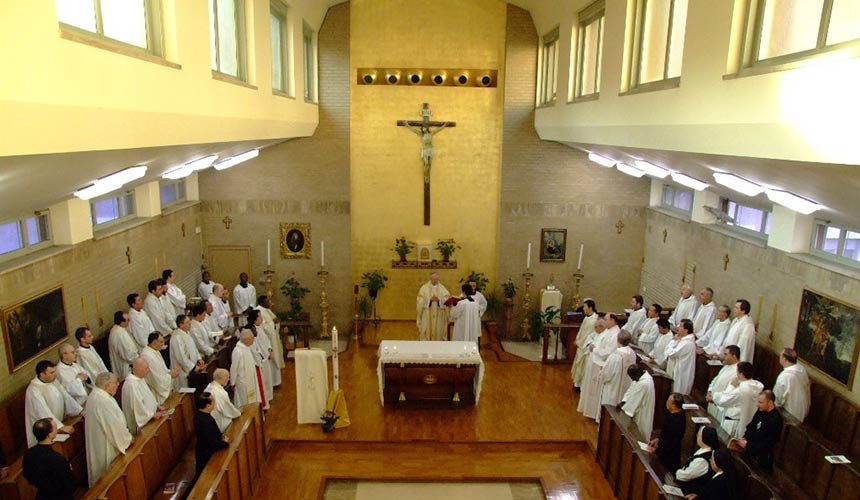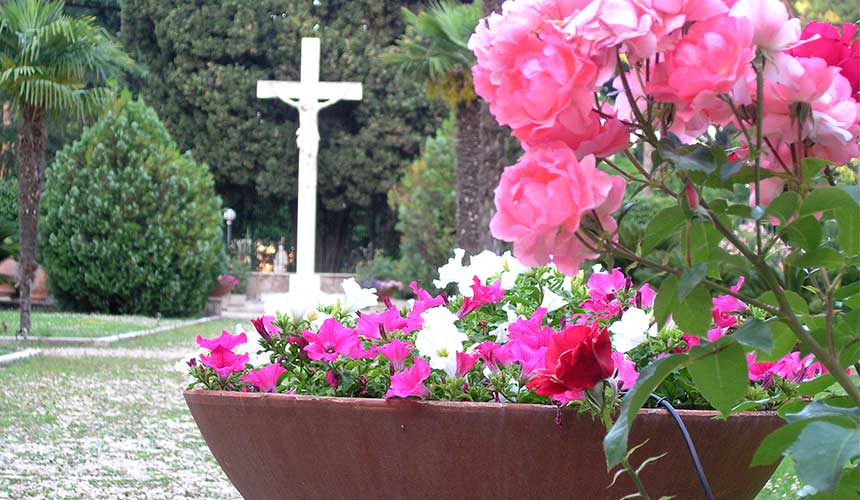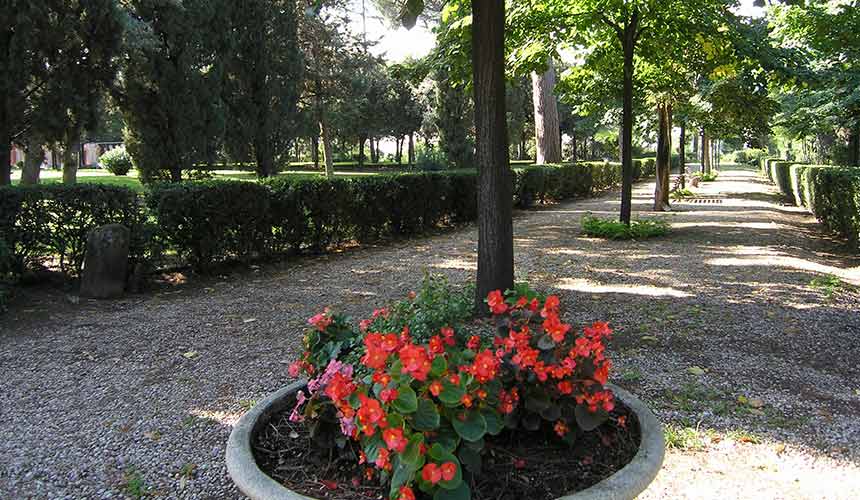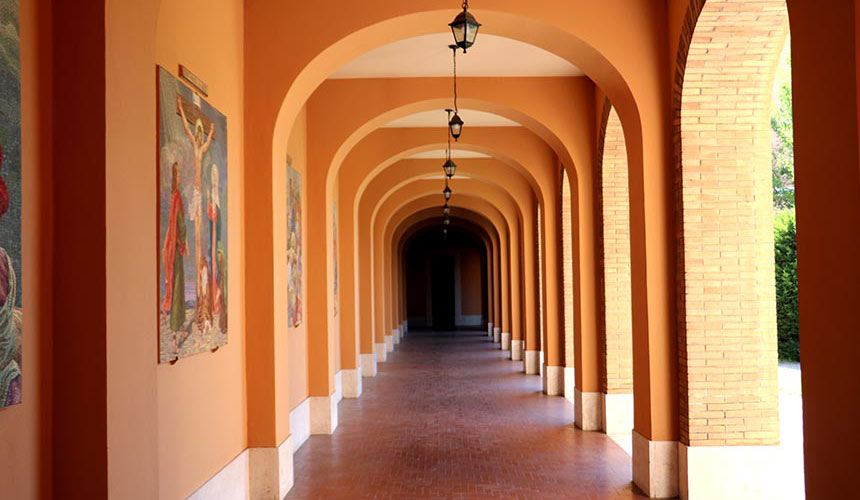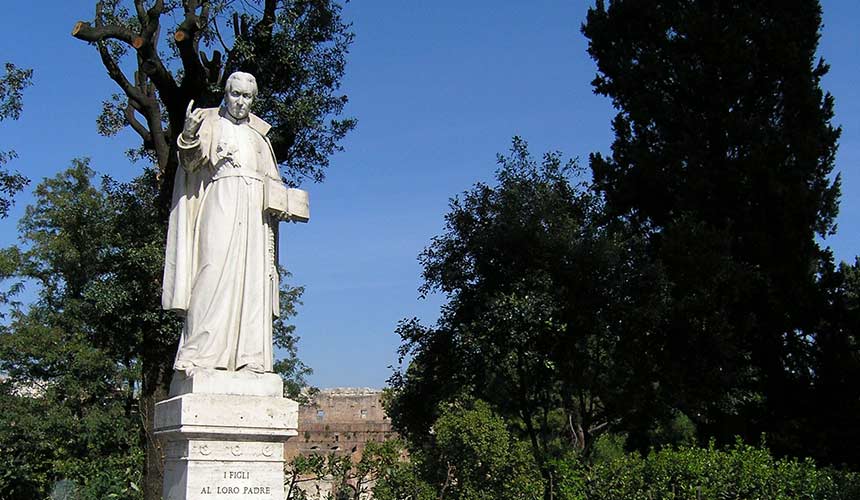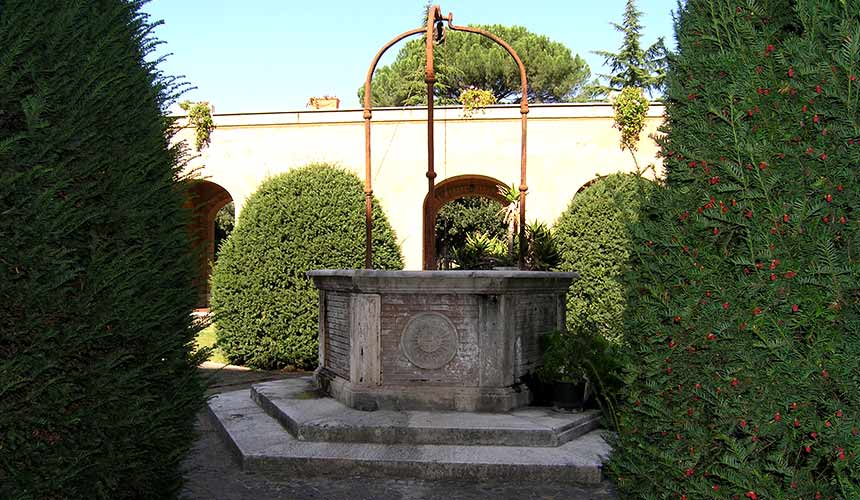La Comunità Passionista del Celio
Cenni storici di P. Tito Paolo Zecca
Quando san Paolo della Croce, insieme ai suoi più stretti collaboratori, entrò nel complesso basilicale-monastico dei Ss. Giovanni e Paolo al Celio, era il tardo pomeriggio del 9 dicembre 1773. Egli veniva ad abitare in un sito cristiano tra i più antichi e venerati di Roma.
In precedenza Paolo e una piccola comunità alloggiarono dal 1768 nell’Ospizio del SS. Crocifisso, situato in via San Giovanni in Laterano. Un precedente progetto, subito sfumato, di presenza stabile nell’Urbe risaliva al 1747, quando si pensò di poter utilizzare la chiesa di san Tommaso in Formis con l’annesso ex-convento dei PP. Trinitari.
Paolo aveva visitato per la prima volta la Città Eterna nell’autunno del 1721 quando, pieno di entusiasmo, si era recato al Palazzo del Quirinale, dove allora risiedeva il papa, per far approvare la regola e l’istituto dei “Poveri di Gesù”.
Faceva parte della comunità anche il p. Vincenzo M. Strambi (+ 1824) che si occupò di organizzare lo studentato e di dare delle norme per gli esercitanti che cominciarono ad affluire al Celio.
Vari religiosi servirono come cappellani l’ospedale di San Giovanni. In quel tempo la zona del Celio era quasi del tutto spopolata. I terreni circostanti erano usati per orti, vigne e pascoli.
L’evento traumatico della occupazione francese dello Stato Pontificio (1798), si ripercosse pesantemente anche sulla comunità Celimontana.
Per vari anni il ritiro rimase del tutto abbandonato. Solo con il ritorno del papa Pio VII nell’Urbe e il ristabilimento dello Stato Pontificio, si poté ricostituire la comunità a partire dal 26 giugno del 1814. È questo un periodo di alto fervore comunitario e di grande impegno apostolico. La congregazione si espande oltre lo Stato Pontificio e la penisola italiana. Artefice di questo attivismo è il grande superiore generale, p. Antonio Testa (+ 1862) che dal Celio regge la congregazione con polso fermo e lucida lungimiranza.
I Passionisti svolgono la loro tipica attività apostolica sia in città che nell’agro romano, anche in zone infestate dalla malaria. Davanti alla portineria del ritiro si affollavano molti poveri ai quali veniva assicurato il pane e in certi periodi anche un pasto caldo.
Altra grande prova la comunità del Celio la dovette affrontare con la fine dello Stato Pontificio e la presa di Roma da parte dell’esercito sabaudo (20 settembre del 1870). Venne per fortuna scongiurata la soppressione della comunità perché il ritiro venne riservato dal Vicariato di Roma a casa di esercizi per il clero romano.
I Patti lateranensi (1929) riconfermarono questa caratteristica della casa Celimontana.
Tra le personalità di maggior spicco, presenti al Celio negli ultimi decenni dell’Ottocento, brilla di particolare luminosità il beato Bernardo Silvestrelli (+ 1911) che sulla scia del suo predecessore, p. Antonio Testa, promosse l’espansione della congregazione conservando la fedeltà alle origini dell’Istituto.
Tra gli altri religiosi che illustrarono la comunità in questo periodo vanno ricordati i venerabili p. Nazareno Santolini (+ 1930), p. Norberto Cassinelli (+ 1911), p. Germano Ruoppolo (+ 1909).
Più vicino ai nostri tempi, spicca per santità di vita e servizio umile e indefesso il venerabile fratel Gerardo Segarduy (+ 1962), portinaio per lunghi anni del ritiro celimontano.
Fra gli anni ’30 e ’60 del Novecento si affrontarono degli ampliamenti resi necessari per assicurare alla comunità generalizia una migliore funzionalità.
Tra gli anni ’50 e ’70 troviamo presenti al Celio, tra gli altri, il superiore generale, servo di Dio p. Teodoro Foley (+ 1974). Ed ancora grandi intellettuali quali p.Gerardo Sciarretta, p. Enrico Zoffoli, p. Paulino Alonso Blanco (+ 2007), p. Fabiano Giorgini (+ 2008), nonché religiosi che prestarono servizio nei dicasteri della Santa Sede, tra cui p. Ladislao Ravasi.
Ancora oggi la comunità dei Ss. Giovanni e Paolo è punto di riferimento fisso per tutti i componenti della Famiglia Passionista.

